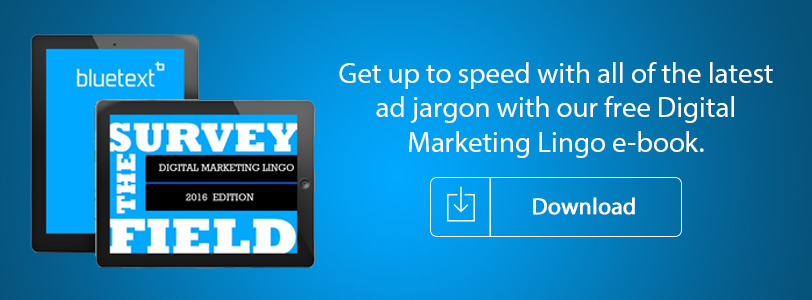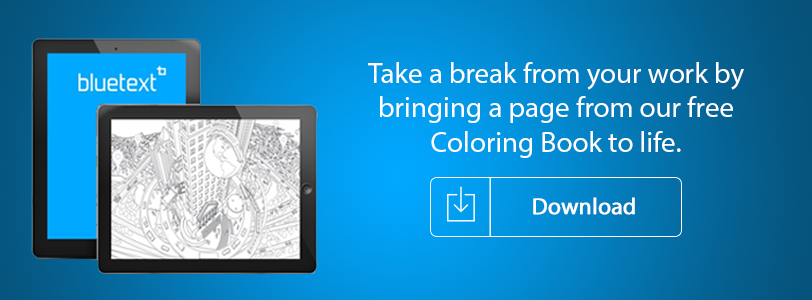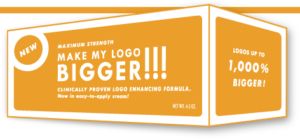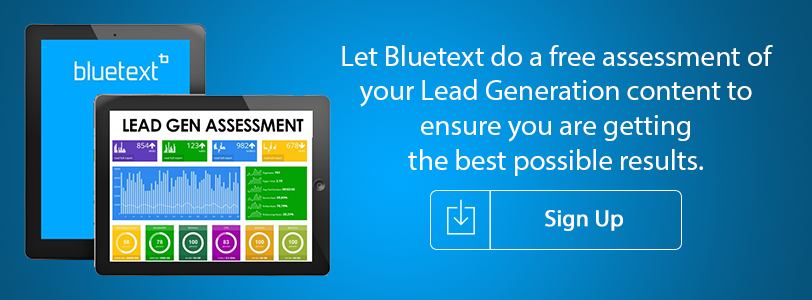As companies mature and think about how to take their business to the next level, invariably one of the toughest questions to answer is when is the right time to hire a marketing agency. Every company is different. As one of the top marketing agencies in Washington, Bluetext meets with companies of all shapes and sizes, and it is safe to say has seen it all. From the CFO who is dabbling in marketing to the head of business development to the person who just graduated last week, companies tackle marketing in different ways. So when someone asks “when the right time to hire a marketing agency is?” I pulled together some telltale signs that would suggest it is time to call in the professionals.
- The only money you are spending to get your name out there is the same industry tradeshow you have been attending for years, and you only go because “everyone goes.” I would be willing to bet that the money spent on that show could be spent on some much more effective tactics
- When someone says that they went to your website and has no idea what you do. This is a problem. You need clarity. You need a digital platform that delivers for your business. Prospects need 6-7 touches as a minimum before they want to engage with your company. The message, design and impact of your website needs to be clear and differentiated. If not then it is time to call a top digital marketing agency.
- You have no plan. How do you expect to grow a business with no marketing plan? Too many times we hear people say that they need to get around to focusing on marketing. That is likely a sign that it is too late. If you are selling a B2B product, a b2b marketing agency should be able to help you create a plan, determine the resources required to execute it, and then help deliver results with impact.
- You think of marketing and business development as the same department…enough said.
- You have to pinch to view your website on your phone…enough said.
- You are constantly looking at your competitors and talking about how great a job they are doing with their brand and positioning. We hear this all the time.
- Every vendor that calls with a marketing idea sounds like a smart plan. A good b2b marketing agency can not only help you craft and execute a plan, but also help you sort through all of the opportunities that exist for promotion and help you point your arrows in the right direction.
So there you have it. Seven signs that it is time to hire a marketing agency. I am sure that this list can go on and on. Please share other thoughts in the comments zone and I will update the list accordingly. And if you don’t know what to do, give us a call. We have worked with companies across many industries to tackle many different marketing challenges to help them take their business to the next level.
When people ask me about Bluetext, I often find myself calling us of the region’s top B2B marketing firms. We work with world class global enterprises. We are on the cutting edge of branding trends and focused on leveraging emerging marketing channels. And we have a world class team of people focused on delivering great results for our clients. So here is my take on what makes us one of the top B2B marketing firms:
- A top B2B marketing firm works across a wide variety of industries. In my view, focusing on just a few industries can be limiting and lead to tired tactics. Instead, taking the learnings from some industries and applying them into adjacent markets can be valuable to clients.
- A top B2B marketing firm can tackle a wide variety of marketing assignments, delivering integrated solutions for clients. Clients like integrated service offerings. They like to work with clients who create a strategy then are able to roll it out via many channels.
- A top B2B marketing firm is working at the forefront of emerging delivery channels. See our recent work for Varonis at bluetext.com/varonis
- A top B2B marketing firm gives guidance versus simply taking orders. Challenging assumptions, doing things differently, and looking at ideas through different lenses can be incredibly valuable.
- A top B2B marketing firm starts with goals versus focusing on channels. Understanding where a client wants to go before deciding how to get there can be quite valuable.
- A top B2B marketing firm should have a seat at the table with you during key strategic meetings.
- A top B2B marketing firm should push your internal team to think beyond traditional channels and programs to reach prospects in new and unique ways.
- A top B2B marketing firm is part of the community and recognized for its great work
- A top B2B marketing firm is able to adjust strategies mid-course.
- A top B2B marketing has a client roster that you immediately recognize.
So that is my list. That is how I define a top B2B marketing firm. What did I miss? Please share other ideas and I can update the post in the future. And for more insights on B2B marketing, reach out to Bluetext today:
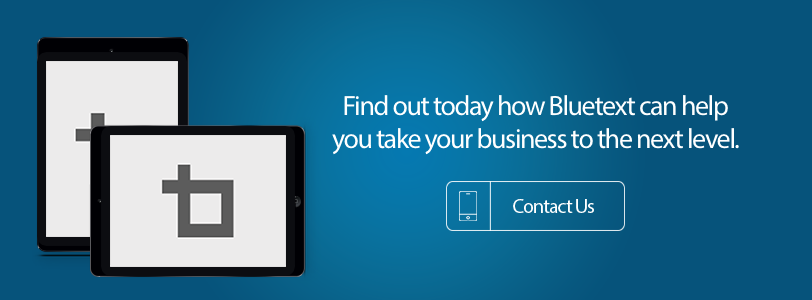
To answer the title of this blog post let’s first start by reviewing the difference between a Digital Marketing Company and a Marketing Company. How much can really be different in today’s digital driven economy? A lot. Many traditional marketing companies claim to offer a full suite of digital services, when, in fact, they do not.
This isn’t a big secret. Traditional marketing companies’ pitches can seem like smoke and mirrors, hiding the fact that they are not capable of providing true digital marketing services such as search engine optimization (SEO), social marketing, and robust user experience design, website redesign and development– and let’s not forget the ever more critical content and UX strategy now necessary for any brand to truly succeed online.

Marketing Companies often maximize their technical capabilities with a help desk junior associate, while digital marketing companies have a chief technology officer and talent that surrounds him to offer top notch digital services to its clients. Marketing companies often feel because their latest version of Photoshop enables them to make a website design comp they are of course now a top website design agency. Not really true as web design in today’s responsive design world requires services such as journey mapping, taxonomy development, and persona research that informs a sophisticated website presentation to its users that really delivers.
While both top digital marketing companies and top marketing companies offer a sophisticated integrated way to drive targeted traffic to its users, the reality is that the digital firm will offer up ideas that use the latest and greatest digital trends because they have talent focused on emerging platforms and how to integrate them together. From virtual reality to data visualizations, this kind of lingo is second nature at a digital marketing company, but at a traditional top marketing company the answer is either the firm is feeling awkward and not confident offering this solution, or the talent helping is a 3rd party consultant that isn’t truly integrated into the agency’s DNA.
So now that I have helped clarify the difference between a Top Digital Marketing Company and a Top Marketing Company, let’s look at that other word – Company vs Agency.
An agency’s job is to plan a campaign using digital and traditional methods such as PR, broadcast media, online advertising, or direct marketing. They utilize the talents of their art directors, graphic designers, and copywriters. They create campaigns that shine the spotlight on your product or service for a finite length of time.
If you have a global strategy, a well-defined brand, a keen idea of exactly who your customer is, and a designated advertising & creative budget, then you might want to utilize the services of a top agency.
Be doubly sure that you know the characteristics, the lifestyle, and current buying preferences of your customers. You don’t want to waste time and money marketing to the wrong person. Knowing your target audience and your ideal buyer is the job of marketing. Also, knowing how to attract customers versus playing tag with them is the job of marketing.
So in summary – agencies focus on campaigns to solve a client’s very specific pain point. Usually defined by the client. Agencies are usually laser focused, agile, and deliver with passion.

Mosaic illustration for the advertising campaign of Clear Channel in Switzerland
Ok, so then what’s is different about a company vs an “agency.”
You may need help in honestly assessing the needs of your business. If that is the case, here are some good questions to start out with:
1) Are you attracting enough leads?
2) Are you able to accurately track results of your advertising and marketing strategy?
3) Are you converting leads to sales?
4) Are you nurturing and maintaining relationships with your customer base?
These are the types of issues that a company can help you with. The agency prides itself, rightfully so, on taking a high level approach with a laser focus on execution. However, the top marketing company takes a more consultative approach. The result is a marketing strategy that is consistent with your company history, values, and short and long term goals. Finally, the biggest result is getting results that match your expectations.

Attention all you marketers out there…ever sat in a meeting not wanting to raise your hand to ask someone for clarification on what they mean? Concerned that your colleagues or manager will think less of you? Gearing up for your next marketing campaign and need to include some new thinking?
Let’s face it – you are not alone. No one wants to be that person who raises their hand in those situations.
The world of digital marketing is moving very fast with new terms and concepts emerging everyday. From SERP to lead scoring to SEO to responsive design, it is getting harder to keep up.
If you are p
Uber just killed off the most recognizable U on the planet. Unlike the black and white U that has emblazoned itself in the minds of millions of Uber users around the world – including myself – the new logo bears no obvious relationship to the company name.
We all know that Uber isn’t alone in leaving a loyal customer base dumbfounded – if not outright offended – by such a seemingly misguided departure from one of the most sought after icons in the world. Over the past couple of years, we have seen AOL, GAP, Pepsi, Tropicana and even Apple be indicted for similar blunders.
The most recent of these was Spotify’s stealth attempt to brighten the tone of its green that literally drove its most devoted users berserk to the extent that some even thought there was something actually wrong with their phones. What Spotify learned from this is that it was not simply about the color or even that the company changed the color, but more that it did so without clear communication to its community of users – and more importantly – not involving them in the design process.
While we can only assume that Spotify learned something about branding through this process – it appears abundantly clear by our near unanimous and collective disaffection with its head scratching visual analogy of “bits & atoms” – that Uber CEO Travis Kalanick did not. While the dust is still settling – what’s also become clear is that he simply refused to entrust the rebranding process to anyone else – and in his attempt to use “bits & atoms” to bring out the human side of the brand in contrast to the starkness of the monochrome U – he has managed to strip its personality altogether – leaving us cold and disconnected from a brand that is suddenly as abstract as it is unfamiliar.
David Shantz sums up the problem perfectly in a comment he left on this VentureBeat article:
“When building a brand – and the visual identity around that brand – the most important audience is the audience. The millions of people who will use Uber day by day. As a semi-regular Uber user, the output of this imaginative and time-consuming re-branding exercise totally leaves me cold. I don’t see or feel anything “Uber” in the logo. I don’t know what I’m looking at.”
At Bluetext, we preach brand simplification – if you have to launch into a detailed explanation of the logo – you have already failed. We strive to create an icon that is instantly recognizable and just as quickly evokes an emotional connection with the brand – through the lens of the customer. To that extent – I have to say that I do love the bolder look of Uber’s new wordmark.
But let’s flash forward three years from now – is it possible that we could look back on this and declare Kalanick a genius by identifying the perfect inflection point in consumer branding which signaled that no one really cares about the logo anymore? A future where people are more interested in what a brand can do for them than how it makes them feel when they see it?
The most powerful thing Uber has going for it that might actually fulfill that prophecy is the sheer might of its social brand platform – its ability invite participation and create value by reinventing itself and its usefulness in authentic and relevant ways is uniquely rare and clearly absent from brands that fail to impose their will to evolve without a strong social foundation.
At the end of the day – will any of us really care what their icon looks like next time we stumble out of our favorite restaurant and order up an Uber Black?
Probably not…
A few months ago my partner Don Goldberg got a Google Cardboard viewer and was showing it off around the office but was not getting much of a rise out of the team. Maybe we all thought Virtual Reality was too far out there and the hype of Oculus Rift was overblown. Fast forward to early November and I got a Google Cardboard viewer packaged with my Sunday New York Times at home (yes, we still get the Sunday Times!). I downloaded the app and was immediately transformed. Being in the visual storytelling business, I knew that a seismic shift was beginning. Video was no longer just video. VR transformed the story, brought the user (me) into the story, and created an experience that everyone in my family was amazed by. With the price point of the Cardboard viewers it would not create a barrier for marketers to reach their audiences, even in the b2b world.
To quote Google’s news release from October: “Google Cardboard is bringing virtual reality worldwide. Starting today, the Google Cardboard app is available in 39 languages and over 100 countries on both Android and iOS devices. Additionally, the Cardboard developer docs are now published in 10 languages to help developers build great VR experiences. With more than 15 million installs of Cardboard apps from Google Play, we’re excited to bring VR to even more people around the world.”
The conversations inside our agency quickly moved to figuring out how to make VR a reality for our clients. Virtual reality could be the next medium for us to do creative storytelling. As a company focused on visual storytelling married with advanced development (see our work for brands like Workday, Adobe, and Jones Lang LaSalle), it was the perfect storm.
Fast forward two months and today we are designing a digital briefing center in Virtual Reality. We are marrying up our creativity, advanced video capabilities, and cutting-edge app development to help an enterprise software company more effectively tell its story. We see virtual reality as more than games and entertainment. We see it as a platform to tell stories in a fun and engaging way.
From what I can tell there are very few agencies doing virtual reality. We are diving in headfirst. With the launch of Google Cardboard we have an opportunity to help our clients tell their story like never before. That is the business we are in and that is what sets us apart.
Innovations in real estate marketing can help drive a company’s ability to hit their desired Key Performance Indicators. Through Bluetext’s experience working with top real estate brands like JLL and Kettler we understand what drives integrated marketing and digital marketing results.
SPEED
Faster websites make more money for their companies. Fast includes how long it takes your real estate website to load, but also how long it takes the real estate website search engine to show the user the type of available product that matches their search. Some sites use real time API calls and tons of third-party data services that bog down a search performance. This performance hit hurts seo, conversion, and engagement metrics. The bottom line is performance matters. The relationship between performance and revenue has been shown over and over again. Here are just a few examples:
- Amazon loses 1% of sales for every 100ms it takes their site to load.
- Shopzilla reduced their loading time from 7 seconds to 2. This performance boost resulted in a 25% increase in pageviews and a 9.5% increase in revenue.
- Mozilla shaved 2.2 seconds off their landing pages and increased download conversions by 15.4%, generating millions of additional Firefox downloads every year.
Ways to speed up your website include:
- Enable CMS compression
- Optimize your images
- Move JavaScript files to the footer
- Merge CSS files – Inline small CSS files
- Use a Content Delivery Network
- Minimize the number of HTTP requests
- Fix your 404 errors
- Take care of your page size
- Reduce the number of API calls
LOCATION AWARE USER EXPERIENCES
The other innovation real estate marketing executive need to consider is launching location aware marketing platforms and tools. Along with the adoption of HTML5, the Geo-location API has become very powerful technology. This allows your site to receive geographic positioning information using JavaScript. Once you have a location aware site or app, you are able to provide more accurate and appropriate content for your visitors. This is called geo-marketing. Geo-marketing is a relatively new concept defined as:
- The integration of geographical intelligence into various aspects of marketing, including websites and sales and distribution.
Although a new term, the principle of geo marketing has been around for a while. Facebook has been utilizing this approach for some time. Facebook gathers location-based data (based on users’ IP addresses) then show advertisers appropriate content for that geographic region. Google and other search engines also use this functionality and include location based search results for their users.
Your real estate website should offer the ability to search where you are located to offer up products around you. Of course many people search for information in another region for relocation scenarios, but the majority are in market moves and these use cases need to be addressed with a fast geo-personalized user experience.
We’d love to talk to you about your real estate marketing need. Let’s chat:
At Bluetext we do a lot of branding and website design. It is a service area where we have achieved a lot of success for clients across many industries, effectively helping them leverage their brand and visual identity to more easily achieve their business goals through their digital platform.
For many of our clients branding and website go hand in hand. We either create a new logo and visual identity from scratch, or evolve a brand identity to update a design system that needs some love, and then design and launch a sophisticated website to bring the brand to life.
You never really know where this process will go until you immerse yourself in the client’s business, getting to know their leadership, sales teams, customers, partners, and other stakeholders that can add valuable perspective.
Over the last several months across a few major client initiatives some unique perspectives emerged that made me step back to think about some tenets of branding that continue to arise as best practices we preach.
1. Bigger is not always better. There is this false perception that the best way to represent the strength and boldness of a brand is to make the logo as big as possible on a website. This is simply not true. Rarely is the fix to a brand question to make the logo bigger. There is a trend toward simpler, smaller branding whereby companies let their logo breath. Beyond the fact that we are moving to a world with smaller screens and a reliance on mobile devices where icons need to stand on their own, bigger logos make it look like you are trying too hard and in fact make your business look smaller.
2. Stand Alone. If possible, a brand mark/icon should stand on its own. I was meeting with the CEO of a major corporate client recently as we were working through a very fast moving branding process. He looked at the simplicity of the Bluetext “BT” icon and said that he really wanted us to replicate that for his brand. While flattering, it is not always that easy. Corporate names can be clunky, but necessary. The Nike swoosh was not globally recognized when it was launched in 1971. So the best advice I can give here is to create a strategic plan for how long it may take for you to feel comfortable enough with brand recognition around your mark whereby people would recognize it without your company name attached to it. Creating an “iconic” brand does not happen overnight, but with careful planning and a commitment to success it is possible.
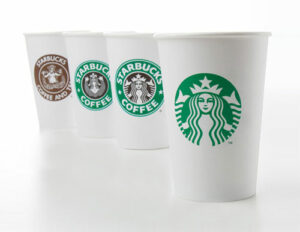
3. Be Simple. We are all visual storytellers, so if your brand mark can tell a simple story that is the ultimate success. The old adage a picture is worth 1,000 words is truer than ever. Look at how people consume content. Create a brand that simply explains who you are or what you do, or at a minimum provides a platform to easily explain your corporate story.
To learn more about the importance of a strong brand, read our latest blog post:
At Bluetext, we are frequently approached by organizations who are questioning the strength and positioning of their brand. They sometimes feel that their brand is getting stale, or that their service and solutions offerings no longer match up to the original name and are looking for guidance on what they should do. This is never an easy question. Any brand that has been in a market has built up brand equity and has begun to stand for something. Target audiences, including current customers, prospects, employees, partners, industry analysts and influencers, have perceptions of the brand, an image in their heads about its people, what the company can deliver, the quality of its products, solutions and services and whether they want to do business with the organization.
Knowing if and when to update the brand, through a new look and feel, a refreshed logo or tag line, its messaging and even its name, is important. We talked with a large company recently that was the market leader in their key verticals. Yet they didn’t think that their legacy brand and name would take them where they wanted to go, and wanted our counsel. Making the decision to jettison a name for a company in a leadership is a huge commitment and one that should never be taken lightly.
The answer is often found in market research in the form of a carefully crafted survey that will uncover what customers and prospects know about the brand, feel about the brand and how they would be likely to react if that brand underwent significant changes. It might be that a simple brand refresh is the best move, modernizing the logo and look and feel, for example. In other cases, a whole new name and approach to the market might be what’s needed to move the company to the next level. In every case, that decision should be informed by real insights into the market, and not just gut feelings that executives might have, no matter how close they think they are to their customers.
By surveying customers about a brand, the goal is to gain insight into very specific areas of knowledge and associations. This means that the survey approach has to be deliberate and precise. When done right, a brand awareness survey can offer the needed insights into:
Brand Recall: With brand recall, the respondent is given what’s known in the trade as an “unaided” question about which brands come to mind when, for example, they think about that particular market or solution. No options are provided to select from.
Brand Recognition: This is the “aided” opposite of an “unaided” question. The respondents are provided a list of companies with the goal of understanding when presented with a list of brands, do they recognize the company as a reputable option.
Brand Identity: Brand identity seeks to test which attributes the respondents associate with the company, and to understand how effective the marketing efforts have been in presenting the brand to the audience.
Brand Image: A brand’s image is based on the customer’s perception alone. Tracking disparities in the marketing and the image can reveal important gaps in marketing campaigns and results.
Brand Trust: This a fairly direct question that measures whether your audiences feel the brand is trustworthy, and is important for understanding client retention trends as well as new client acquisition.
Brand Loyalty: Loyal customers are often the best way to win over new ones, so tracking loyalty can give insight to whether the company is building the kind of customer relationships that turn them into evangelists for the brand.
Customer Profile: Changes in your core customer base may signal the need for a pivot, either in the product or service or in the marketing.
We are big believers in market research to inform these types of high-risk decisions, but only if it is the right kind of research that will deliver the insights that are needed. Not every research tool is going to deliver the best results for the client. Bluetext employs a number of methodologies for understanding how a market perceives a brand. They fall into a family of four types of survey tools and strategies, each providing a different way to reach a target audience and each that will deliver different types of insights:
IDI’s—In-Depth-Interviews are an easy way to understand the perspectives of the company’s executives as well as key customers. They are typically done one-on-one and follow a guided set of questions in order to compare answers among executives. They are conversational in order to get into more depth than a multiple choice question on a survey. We recommend including the CEO and head of sales as well as board members, customers and partners.
IDI’s help set a baseline from those with the most knowledge of the company and the market. They also allows us to gain insights from those on the front lines with clients and prospects, and how those key decision makers react and respond to the brand’s messaging. What IDI’s don’t do is give an unbiased view of the company, because by definition they rely on those with the most knowledge of the company. We think that is very valuable when beginning any research project. We use IDI’s extensively as part of our Discovery process and to develop new messages.
Online Panel Surveys—Online panels are today’s version of the phone surveys that used to dominate the research field, and understanding the difference is important. Panel surveys are gathered from people who agree to be included in online surveys, and are broad enough to provide a random sample for statistical purposes. One of the main differences from phone surveys is that the audience is self-selecting: they agree in advance to be included in panels.
Phone surveys have gone out of favor for our purposes due to the shrinking demographics of households that have phone lines, legal restrictions on calls to cell phones, high cost and declining participation rates. While phones surveys are important when a very precise analysis of public attitudes is needed, such as political campaigns, for example, we rarely include these in our clients’ projects.
Online panel surveys deliver a broad section of the target market with a randomized sampling that enables projections within a margin of error, and are the most economical way to do that. Online panels will include individuals who may not have a direct knowledge of the company or brand at issue, and so may provide insight into how well a brand is known compared to its competitors. However, those same individuals won’t have any insights to a company with which they are unfamiliar. For that reason, these types of surveys make the most sense when the company has enough name recognition or a large enough footprint that a majority of the survey respondents would have a good likelihood of at least some recognition of the company. We also recommend online panel surveys to understand market trends, audience behavior and to generate news or content in the form of proof points or even surprising results that challenge conventional wisdom.
Database Surveys—When the goal is analyzing how a company’s market and ecosystem perceives that brand, for example in relation to its key competitors, relying on people who already have familiarity with the company can often deliver the best results. This is especially true for brands that may not be a house-hold name in that market, and thus the majority of respondents to an online panel survey would not know the company. In these situations, we often recommend leveraging the company’s own database, which typically includes current and past customers and clients, prospects and others with whom they have communicated with or marketed to previously. By definition, this audience will have at least some familiarity with the brand, either through direct experience or through receiving emails or being targeted in marketing campaigns.
We call this approach “database surveys.” This allows us to employ a method that is more cost effective while still obtaining the valuable insight the company needs to make the hard brand decisions. The cost savings come in not having to purchase an online panel list or survey tool. We can employ survey tools like Survey Monkey to compile the responses and parse the data.
Focus Groups—The fourth tool that we use is called a Focus Group, which is a conversation with up to a dozen people at one time, led by a moderator who guides the discussion. Focus groups can use recruited individuals who fit certain categories, such as the industry they work in, the rank in their company, and even demographics for age and location. They can also use members of the company or customers, much as the IDI’s do. Focus groups are not randomly selected and do not return statistically significant responses, but that is not their purpose. They are better suited for testing new messaging, getting a response to a new brand or look and feel, or diving more deeply into perceptions and biases. One challenge of a focus group is that a particular individual can dominate the discussion and limit the participation from others, but a good moderator can keep the group on track and the conversation productive.
If you feel that your brand isn’t performing up to expectations, or believe it may be time for a refresh or a new direction, gives us a call. Bluetext can craft the right approach that will deliver the insights and results to make the right decisions.
Whether it is your portfolio of products, services or solutions, most marketing executives and branding professionals are well acquainted with the concept of brand architecture. They may be less familiar, however, with the related concept of naming architecture. While the two approaches are similar, there are significant differences in both purpose and process.
At its core, a naming system or naming architecture is created to simplify navigation of a suite of products, services or solutions, usually created via clear and concise names. It is important to create names that have SEO considerations in them from both a long tail and short tail perspective. In practice, a smart scalable naming systems enables a company or organization to guide the naming of its capabilities and offerings so that customers can readily understand what is being offered. You want these names to be accessible in the following three core components:
- Accessible to customers
- Accessible to search engine spiders
- Accessible in all markets you hope to target
Organizations most frequently need to develop a naming architecture or naming system when they are a startup or newly formed division or have merged with another organization and need to clearly present a new or combined set of products, solutions, capabilities and offerings. It is also required when an existing portfolio has become so inconsistent or burdened with proprietary names that it is too complex to comprehend or navigate.
A good naming hierarchy is useful when organizations can create a new offering and the naming of it is swift, painless, and builds on top of the naming system of its current offerings in market.
While developing a naming architecture may involve creating new names, it’s actually more critical to focus on creating consistent naming criteria, hierarchies, and constructs. In fact, this process often results in streamlining the number of proprietary names in a portfolio.
Here are four critical steps to creating and/or simplifying a naming system or naming architecture:
Model Your Portfolio
Analyze your current product suite as a starting point for understanding the naming challenges being faced and identifying opportunities for simplifying things.
No two companies are exactly alike, and no single architecture model fits all. This auditing process provides the framework for restructuring the portfolio and determining where different types of names fit.
For example, when WellNet needed to simplify their complex and evolving portfolio we helped them develop a framework by first organizing offerings into four broad categories: Health, Engage, Prescribe, and Advise. This enabled WellNet to offer a clear, comprehensive integrated solution to the market to achieve their growth goals.
Define Criteria For Naming
After analyzing the current suite of names, the next step is to determine the criteria for selecting the right types of names. When are generic or descriptive names most effective? When are suggestive names — names that evoke an offering’s purpose or benefits — more appropriate? When should you consider using arbitrary or made up names instead, given that these, while distinctive, are less meaningful?
For example, Inspirata. When entrepreneur Satish Sanan (who sold his previous enterprises for close to $1Billion) needed a branding firm to bring his new cancer diagnostics venture to market, he turned to Bluetext. Working with his extended management team, Bluetext created the name, messaging, brand, logo, visual identity, responsive website, family of videos, and process infographic to most effectively share with their target audience the impact of their solution. The name Inspirata was rooted in two key words. Inspired Data. Part of Satish’s vision was to inspire the medical industry of what’s possible when we curate, manage, and analyze big data using advanced technologies and methodologies. For Inspirata, SEO was not a focus out of the gate. Their business focuses on executive relationships with the world’s leading cancer centers. Capturing business opportunities through Google and other search engines was not a KPI thus he wanted a name that engaged and inspired their customers / partners as they build out their full vision.
Naming Frameworks
Once the naming system criteria have been determined, the next step is to rationalize how the names will fit together within the suite of products. This step has two parts. First, one needs to determine the overall structure and hierarchy of names. Next, one needs to create consistent naming constructs. Here you consider the individual parts of a name. Typically, a naming construct will include a masterbrand, a specific product name (based on the naming selection criteria), and a descriptor. It may also, in certain cases, include a modifier that indicates the audience or specific area of solution for this offering.
For example, for our client Sourcefire you will see how we helped drive a smart scalable system for their products naming them as firePOWER, fireSIGHT, fireAMP, and fireCLOUD. This product naming system replaced naming from acquired brands like Clam AV, Snort, and Razorback.
Internal governance
With all of these systems in place, it is critical to ensure the naming architecture will endure the test of time. This is accomplished by developing internal governance procedures, future naming frameworks, style guidelines, and other tools to aid decision-making and compliance. You want to make sure that moving forward, everyone involved follows the same process and guidelines when it comes to naming.
At the end of the day, the key goal is accessibility, clarity and consistency. By developing an effective and enduring naming architecture, a product portfolio becomes more understandable for customers, while reducing the cost and complexity of creating and managing names as a unique process each time.
Have a naming challenge, we would love to chat with you about it. Contact us.
